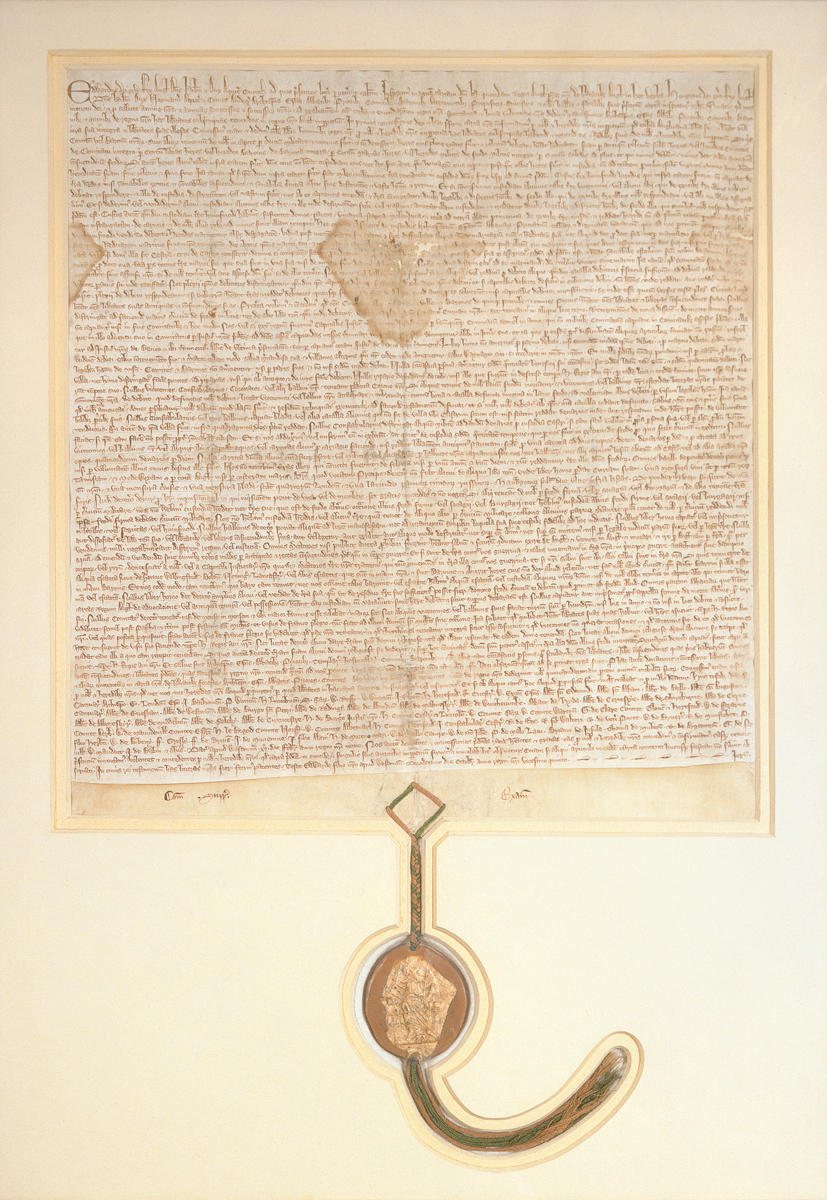Magna Carta
This fact sheet explores the Magna Carta – the ‘Great Charter’. It includes information about the history of the Magna Carta and its importance in the development of democracy and human rights.
What will I learn?
- The original Magna Carta was a peace treaty between the king and his barons.
- The Magna Carta set up the idea of the rule of law.
- The Magna Carta influenced the development of democracy and human rights.
Curriculum alignment
Year 6 ACHASSK143
What is the Magna Carta?
The Magna Carta is a document that set up the idea that all people, including the king, have rights and responsibilities under the law. The first version of the Magna Carta was written in 1215 as a peace treaty between King John of England and his barons – noblemen.
1215 edition
Before the Magna Carta, King John had total power as a feudal monarch. He gave the barons their titles and estates – lands – in return for their loyalty. King John was a cruel tyrant, who expected the barons to give him money and troops to fight a long war with France. The barons had to tax their people harshly to pay for the war and force men from their estates to fight in the war.
By 1215 the barons were fed up with the King's behaviour and many rebelled against him. They seized the Tower of London and demanded the King listen to them. In a meadow at Runnymede in June, the King and the barons met and agreed on the terms of the Magna Carta. The document was copied and fixed with the king's seal. It was then sent to all parts of the kingdom to be read aloud, as many people at that time could not read.
In return for the barons promising loyalty to King John, the Magna Carta limited the king's power and set out the rights of the barons under the feudal system. However, it also described the rule of law, including the important point that the king had to obey the law like all other people. Individual rights and freedoms were defined, with one of the most important sections reading:
To no one will we sell, to no one deny or delay right or justice.
The following years 
Inspeximus issue of Magna Carta, 1297.
Parliament House Art Collection, Department of Parliamentary Services, Canberra ACT
Inspeximus issue of Magna Carta, 1297.

Parliament House Art Collection, Department of Parliamentary Services, Canberra ACT
Description
A copy of the Magna Carta that is part of the Parliament House Art Collection. The Magna Carta was important in the development of democracy and has influenced many other documents including the Australian Constitution.
The 1297 Inspeximus issue is a rectangular document which is covered in small, old-style writing. A seal hangs from the bottom.
Copyright information
Permission for publication must be sought from Parliament House Art Collection. Contact DPS Art Services, phone: 02 62775034 or 02 62775123

Inspeximus issue of Magna Carta, 1297.
Parliament House Art Collection, Department of Parliamentary Services, Canberra ACT
Inspeximus issue of Magna Carta, 1297.

Parliament House Art Collection, Department of Parliamentary Services, Canberra ACT
Description
A copy of the Magna Carta that is part of the Parliament House Art Collection. The Magna Carta was important in the development of democracy and has influenced many other documents including the Australian Constitution.
The 1297 Inspeximus issue is a rectangular document which is covered in small, old-style writing. A seal hangs from the bottom.
Copyright information
Permission for publication must be sought from Parliament House Art Collection. Contact DPS Art Services, phone: 02 62775034 or 02 62775123
King John then ignored the Magna Carta and broke his agreement with the barons. More changes were made to the Magna Carta by later monarchs, but many of the original ideas stayed the same.
In 1264 Simon de Montford, a baron, overthrew King Henry III and became the ruler. De Montford believed that the king's power should be limited. He called together knights and non-noble representatives from across the kingdom to meet in a parliament. Although it would be many years before parliament met regularly and included commoners, the idea of the modern parliament had begun.
During the 1200s, the Magna Carta was quoted as laws were made and petitions were prepared against the unfair use of power.
King Edward I ordered an Inspeximus edition of the Magna Carta be reissued in 1297. In this edition, King Edward declared that the Magna Carta would from then on be a part of common law.
Democracy and human rights
Although written in medieval England, the Magna Carta is still important today. It is a lasting symbol of the basic rights and freedoms of people under the law. This idea, first written in the document 800 years ago, has been developed and strengthened over time. The Magna Carta has influenced documents such as the 1776 US Declaration of Independence, the 1901 Australian Constitution and the 1948 Universal Declaration of Human Rights.
About 24 copies of different editions of the Magna Carta remain, mostly held in English libraries or public collections. Parliament House in Canberra has one of only four copies still left of the original 1297 Inspeximus edition.